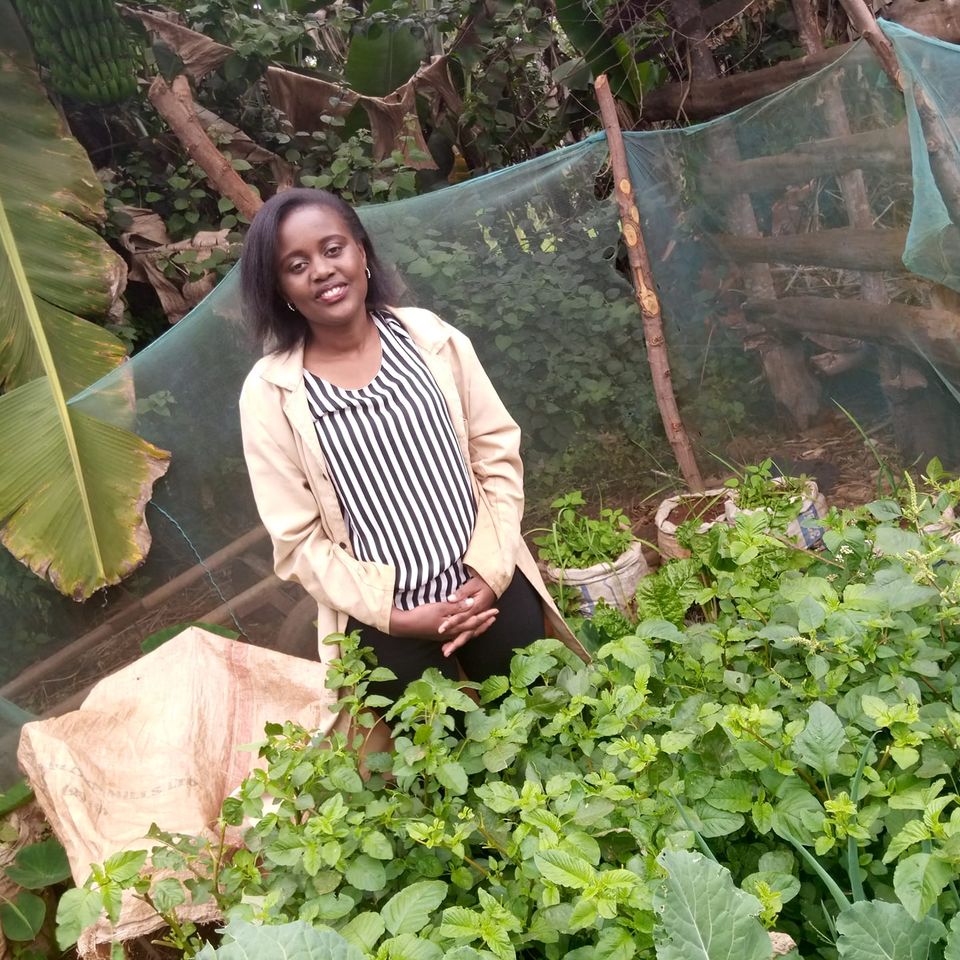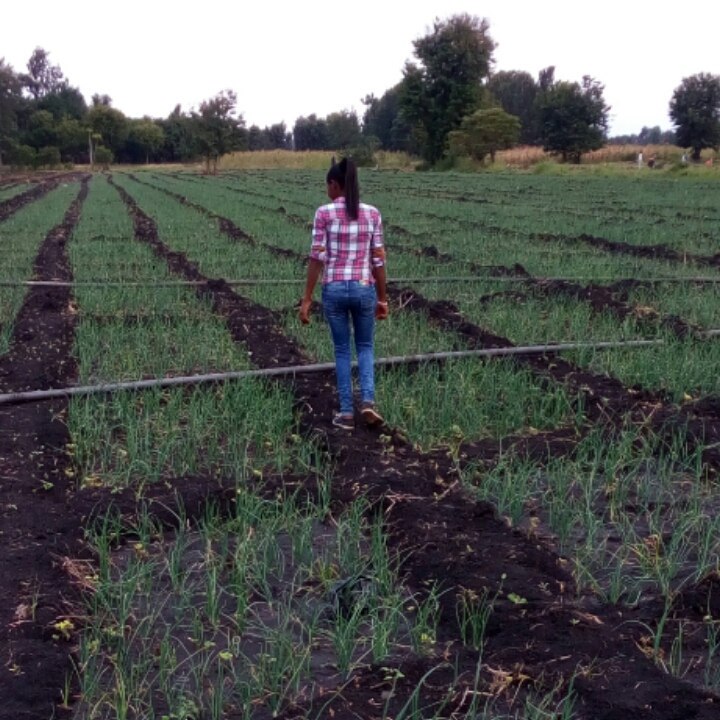
By George Munene
On an 8 x 6 slice of land adjacent to her home in Embu, Maureen Mwaniki, a 22-year-old student at the Nyandarua Institute of Science and Technology has set up her own kitchen garden stocked with vegetables— from sukuma wiki, managu, terere and cabbages. She also grows onions and tomatoes and has even worked out how to propagate herbs such as garlic and ginger.
The distance to markets and scarcity caused by the seasonality of everyday essentials she says gave her the impetus to start the project. Being in school, she did not have the time to properly tend to the farm but the stoppage in learning occasioned by the Corona virus has given her time to cultivate into her backyard garden.
Her garden is fenced off with a worn-out mosquito net which acts as a shade net that keeps off invasive insects such as whiteflies. This has in turn significantly reduced her need to use pesticides.
Related News: Innovator: farmer fills cement bags to create a mountain of food
Studies also show that crop yield in shade nets is up to six times more than those grown in an open field and that they save farmers up to 30 per cent of harvestable yield losses. Nets also trap heat for the crops which substantially reduces their maturity period.
She grows her crops in cement bags and decrepit buckets, basins and plates which she fills with sifted out topsoil and manure. “Farmers mix in sand into bags to help in water penetration, however, besides being nutritious to the soil, manure also increases its capacity for water absorption and penetration as well as the soil’s water-holding capacity,” says Maureen. Concrete bags used for growing should be well perforated to allow for air circulation and avoid build-up of excess water which rots vegetative material.
Whilst the idea of growing vegetables in bags is no longer a novelty, Maureen also propagates garlic. She grows four cloves in one bag, this she says ensures they have adequate growing room; each clove will sprout into its own bulb and if they are too many in one bag they will have too much competition for resources and will grow-out too small. She measures the depth of planting by sinking her thumb into the soil whilst the distance from each clove is. She then covers the bulbs with manured soil and waters. The neck serves as a shoot, while the base of the garlic will form the rooting system. Bigger cloves make similarly bigger and healthier bulbs. On the perforated side of bags used to grow garlic, you can also grow other vegetables like sukumawiki.
Related News: Fact sheet: how to make a vertical sack garden
Related News: How to set a simple vermiculture system for your kitchen garden
Garlics usually come in two varieties; hardnecked—characterised by a stiff neck and softnecked. Softneck garlic does well in hot areas while the hardnecked garlic does better in colder climates. Hardneck varieties also do not store as well. They usually start to shrivel and deteriorate post-harvest after four to six months while softnecks keep for nine to twelve months under ideal storage conditions.
While the produce from her farm is meant for subsistence consumption, she usually has excess Sukumawiki which she sells or gives out for free to neighbours and visitors.
Maureen has even set up her own Youtube channel which she hopes to use to encourage more people to get into backyard farming: “I would like to empower other people and have them learn that they do not need to buy every food item. If you could keep that 10 or 20 bob you use every day to buy sukuma or onions, over the course of a year that is a lot of money saved.”
Write comment (0 Comments)
















